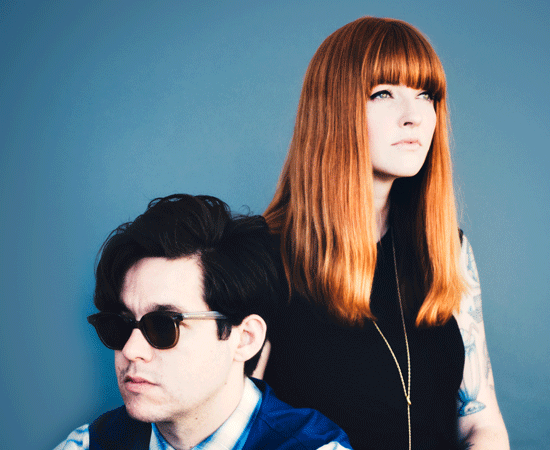
Ryan Adams helps La Sera conjure the Smiths’ rockabilly twang
“I think we are always trying to sound more like the Smiths,” says La Sera’s Katy Goodman, laughing.
Goodman laughs often as she talks about her band’s fourth album, Music For Listening To Music To. It’s the first she’s recorded with her new husband, guitarist Todd Wisenbaker, as a full-time member. Wisenbaker, who produced La Sera’s Hour Of The Dawn in 2014, is the one responsible for the Johnny Marrlike guitar that runs through the album’s 10 songs, although producer Ryan Adams gets some credit there, too.
Goodman met Adams five years or so ago, and talked about working together, but Jenny Lewis is the one who catalyzed the union for the new album. Wisenbaker had played guitar in Lewis’ band, and when Lewis worked with Adams on 2014’s The Voyager, she told him that she thought he and Wisenbaker would like one another.
“Todd and Ryan finally hung out, and they fell in love with each other,” says Goodman. That led to Adams producing Music For Listening (all analog, using mostly first- and second-take versions), and shortly thereafter, Adams, Wisenbaker and La Sera drummer Nate Lotz making 1989, Adams’ album of Taylor Swift covers.
Known as Kickball Katy when she played bass in Vivian Girls when they were part of the same North Jersey scene that birthed Real Estate and Titus Andronicus, Goodman blended noisy garage rock and sweet girl-group melodies on the first three La Sera albums, but the new record manages the neat trick of honoring the Smiths without slavishly mimicking them. It’s fun, however, to pick out the parallels and the sly allusions (you could call that game “Stop me if you think you’ve heard this one before”).
“The Smiths are my favorite band and Todd’s favorite band, and pretty much Ryan’s favorite band,” says Goodman. “We could all bond over that. We were going for the Meat Is Murder, rockabilly side of the Smiths. Like ‘Rusholme Ru ffians’—that kind of country side of them, defi nitely with that urgency. It’s not easy to sound like the Smiths.”
Wisenbaker agrees, “I think if it were easy, more people would play like that. I’ve been playing guitar for more than 20 years, and all that time I’ve been a Smiths fan,” he says. “There’s a level of precision that makes the Smiths sound like that. How Johnny Marr picks his guitar, how he layers guitars, arpeggios .That’s kind of his deal. Also, one thing about the Smiths’ guitar playing: It comes from a folk style of guitar playing, which I’m a big fan of, and rockabilly and old-school country. It’s an Americana style.”
Goodman says she’s always been inspired by Morrissey’s lyrics, but she wasn’t trying to write like him. That would be presumptuous.
“I like his attitude and how he’s singing directly at people in his songs,” she says. “I’m mad about this and then going into detail about it. That’s kind of a Morrissey thing to do.”
You can hear that attitude on bitter songs like “Time To Go” and “High Notes,” although not so much on love song “Take My Heart,” a retort, of sorts, to her own “Break My Heart” from 2012’s Sees The Light.
“A lot of the songs on my fi rst two records, and even some on the third, were about breaking up with people. But now in my life, I’m not at that place anymore and I think about other things,” says Goodman, laughing again. “Now, I’m angry about other things. There’s plenty in the world to be angry about.”
—Steve Klinge






